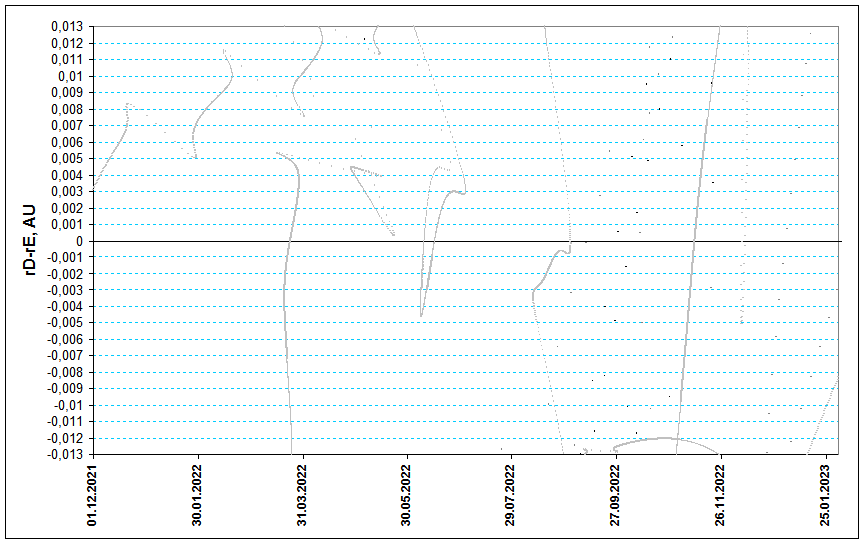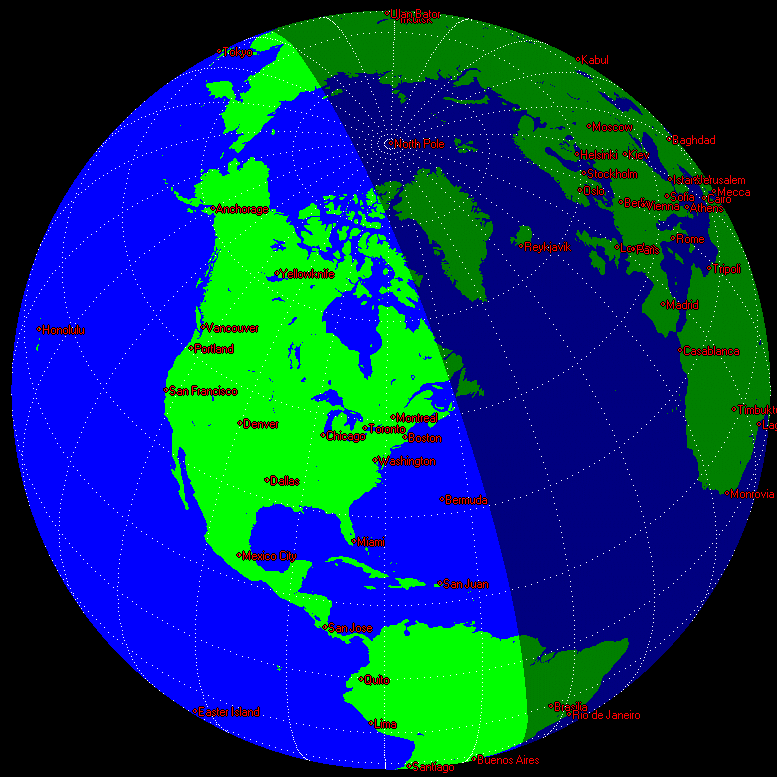Draconids 2022: prediction of activity
to the list of predictions

Fig. 1. Space-temporal projection of the Draconids trails parts onto their minimal distance passages in 2022 (correspondence between colours of the particles and their ejection velocities can be seen here).
In 2022 the Earth is expected to encounter to the trail of the comet 21P/Giacobini-Zinner ejected in 1831. This is an old trail which is quite rarified. The computations show that the Earth passes at 0.00061 AU from the trail, the ejection velocity of its particles is 9.21 m/s. The computed density of the trail is quite low being only 2.7% of the density of a 1 revolution Leonids trail. Such low density as well as quite high age of the trail mean that expected activity from it is low with expected ZHR of obly 1-2, i.e. the activity is expected to at several meteors per hour at best.

Fig. 2. The Earth as seen from coming Draconid meteors (RA=262.2°, Dec=+49.6°) during the expected maximum time of outburst from 1831 trail at 21:22 UT on 6 October.
The computed time of maximum from 1831 trail is 21:22 UT on 6 October with the radiant RA=262.2°, Dec=+49.6°. In case this activity occurs in the given time it could be observed in European countries as well as in the major part of the north of Eurasia excluding its eastern end. Reasonable conditions would also be in the extreme west of Africa.
References
1. "Comet's dust 2.0" program by S. Shanov and S. Dubrovsky. [Used for orbital computations.]
2. E. Lyytinen, T. van Flandern "Predicting the strength of Leonid outbursts", 2000, Earth, Moon, and Planets, P. 149-166.
3. Jenniskens P. Meteor showers and their parent comets, 2006, 780 p. 4. Kasuo Kinoshita, http://jcometobs.web.fc2.com/ [Orbital elements of the comet 21P/Giacobini-Zinner]
5. Hewgill G. Xearth 1.1.0 (Software program), 2003.
References
1. "Comet's dust 2.0" program by S. Shanov and S. Dubrovsky. [Used for orbital computations.]
2. E. Lyytinen, T. van Flandern "Predicting the strength of Leonid outbursts", 2000, Earth, Moon, and Planets, P. 149-166.
3. Jenniskens P. Meteor showers and their parent comets, 2006, 780 p. 4. Kasuo Kinoshita, http://jcometobs.web.fc2.com/ [Orbital elements of the comet 21P/Giacobini-Zinner]
5. Hewgill G. Xearth 1.1.0 (Software program), 2003.